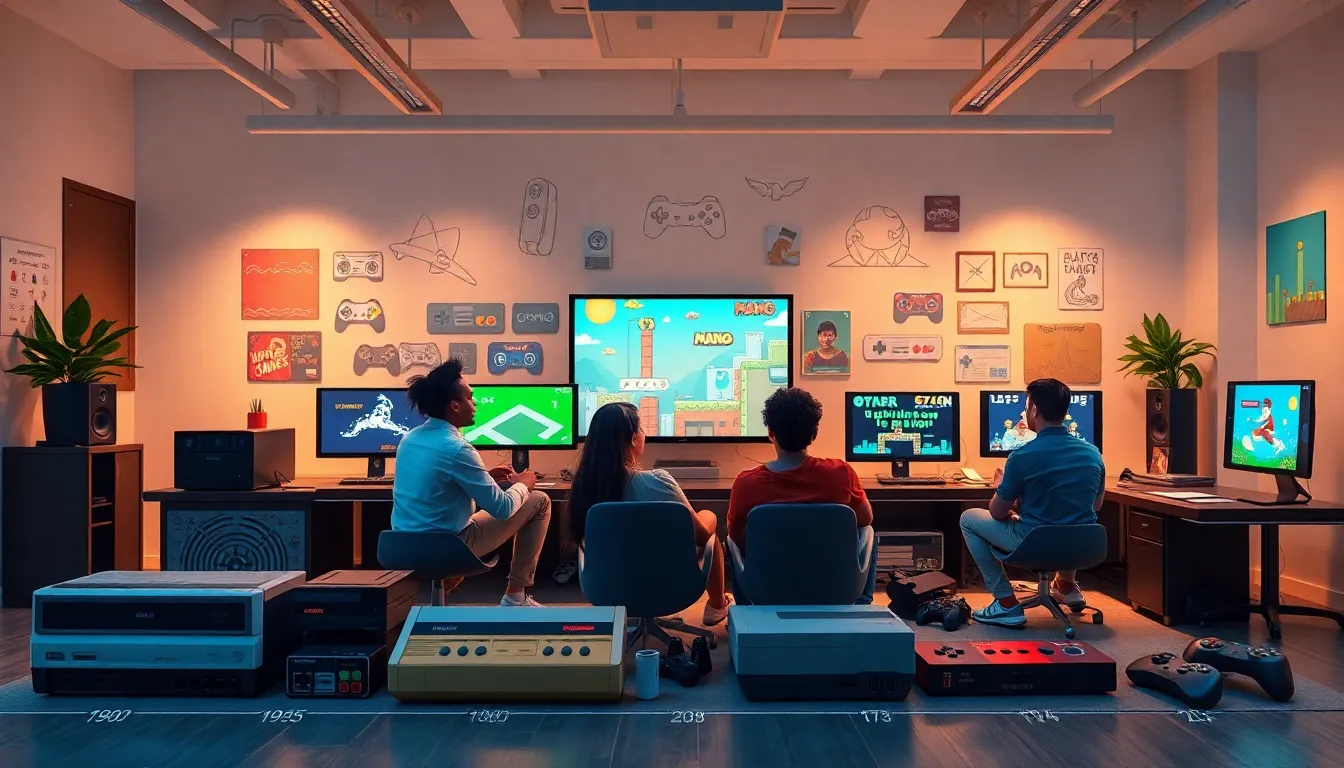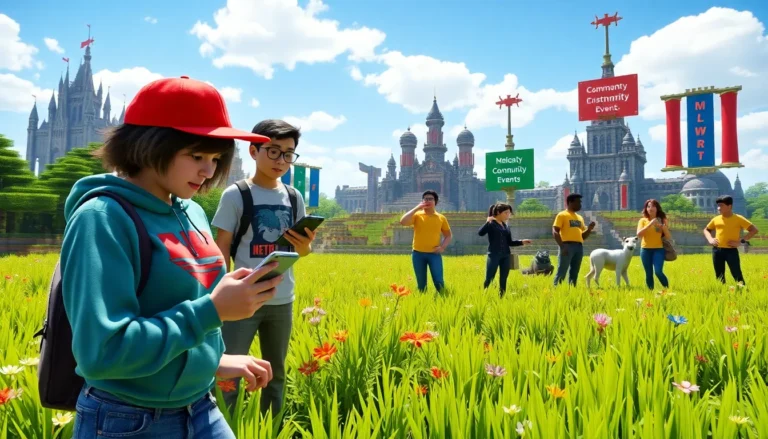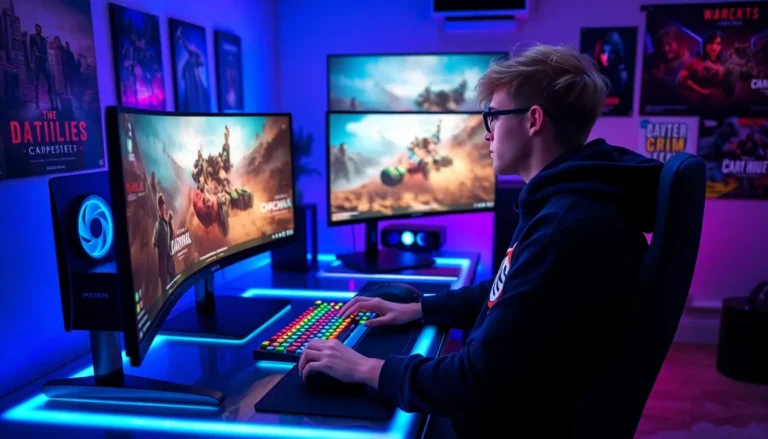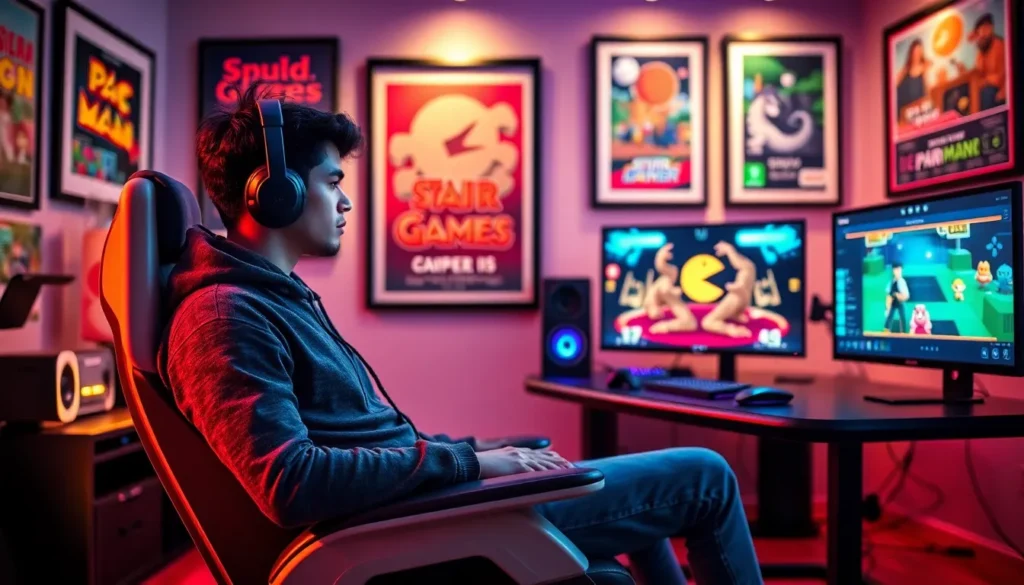Table of Contents
ToggleHave you ever wondered how video games evolved from pixelated blocks to immersive virtual worlds? It’s a wild ride, full of nostalgia and innovation. In this exploration of gaming culture, we’ll stir the pot, throw in a dash of humor, and unlock the secrets behind everything from arcade classics to today’s multiplayer behemoths. Buckle up, because gaming isn’t just a pastime: it’s a revolution.
A Brief History Of Video Games

Video games have a fascinating history dating back to the early 1950s, when computer scientists began experimenting with simple games. Initially, these were basic simulations, such as Tennis for Two, developed in 1958. This marked the start of a journey that would take us from two-dimensional graphics to stunningly realistic worlds.
In the early 1970s, arcade games started capturing attention, with titles like Pong leading the charge. Suddenly, it wasn’t just about who could solve a puzzle faster: it was about who could master the joystick. The late 1970s and 1980s saw the rise of home consoles like the Atari 2600, which made gaming more accessible. Families gathered around their television sets, battling it out in Space Invaders or Pac-Man, laying the foundation for a cultural phenomenon.
As technology leaped forward, so did the complexity of games. The Nintendo Entertainment System (NES) transformed the gaming landscape in the late 1980s, introducing iconic franchises like Super Mario Bros.. It was a paradigm shift, igniting passion in gamer hearts worldwide.
The 1990s brought further innovation, with the introduction of 3D graphics in games like Doom and Final Fantasy VII. This era fueled the idea that gaming could tell profound stories, captivating audiences in unprecedented ways. Without a doubt, this marked a turning point in not just the technology, but the narrative depth of video games.
In the 2000s, online gaming began its ascent, leading us toward the age of connectivity we live in today.
The Rise Of Online Gaming
The dawn of the internet revolutionized gaming, transforming solitary experiences into shared adventures. Gone were the days when players could only enjoy games in the comfort of their own living rooms. Now, they could join others across the globe, battling foes in real-time or teaming up to conquer difficult quests.
Games like World of Warcraft and Counter-Strike sprung into life, offering immersive universes teeming with players. Suddenly, gamers weren’t just looking for high scores: they were forging friendships, rivalries, and communities. The appeal of online gaming expanded beyond mere entertainment: it became a social hub where people formed bonds over their shared interests.
But, the rise of online gaming wasn’t without challenges. Issues like toxicity, harassment, and the infamous lag drove many gamers from their comfort zones on occasion. Yet, amidst these hurdles, players found camaraderie and resilience, shaking hands (virtually, of course) to overcome the challenges together.
In this new arena, competition thrived. Esports burst onto the scene, transforming casual players into professional competitors. It wasn’t just playing for fun anymore: top players found themselves in stadiums, competing for millions. Organizations and sponsorships sprouted, turning gaming into a legitimate career for many.
Impact Of Gaming Communities
Communities in gaming have evolved into vibrant ecosystems, serving as support systems for countless gamers. From Discord servers to subreddit threads, players congregate with shared zeal, discussing strategies, sharing art, or debating the latest in-game events.
Take, for instance, Twitch and its associated communities. Gamers can interact with streamers in real-time, providing instant feedback and encouragement. Chat rooms filled with fans create a lively atmosphere, enhancing the gaming experience beyond the screen. In this realm, reaching out for help or sharing triumphs is as easy as typing a message, fostering connections that might not have existed otherwise.
Besides, these communities serve as a haven for inclusivity and support. Many gamers turn to these spaces to share their experiences and struggles, finding validation and understanding among like-minded individuals. From players sharing their mental health journeys to gaming groups promoting diversity, these communities champion progress and acceptance.
In essence, gaming communities do more than bring players together, they cultivate a culture of support and empowerment, allowing voices to rise and flourish in a world often marked by competition and comparison.
The Role Of Streamers And Influencers
It’s hard to overstate the impact that streamers and influencers have on gaming culture. They’ve become the modern-day celebrities of the digital age, attracting millions of followers with their charismatic playstyles and relatable personalities. Platforms like Twitch and YouTube serve as their stages, where they share not only gameplay but also engage in discussions, fostering a sense of community.
Currently, streamers don’t just play games: they create moments of connection and laughter that resonate deeply with their audience. Whether it’s a well-timed joke or an epic fail, these personalities generate a shared experience, blurring the lines between performers and their viewers. Gamers tune in not just for the gameplay, but for the human connection.
Also, the influence of these streamers extends beyond entertainment. They play a pivotal role in promoting games, shaping trends, and impacting gaming culture. A single shoutout from a popular streamer can send a lesser-known game soaring in popularity. They have the power to dictate which games the masses flock to, often catalyzing the success of indie developers and major titles alike.
But, this new dynamic comes with responsibility. As role models, their actions can significantly influence their viewers and the broader gaming community. Content creators are increasingly aware of their impact and often take to their platforms to promote positive messages, advocate for mental health awareness, and encourage inclusivity.
Diversity And Inclusion In Gaming
Diversity and inclusion have rocketed to the forefront of gaming discourse. As games evolve, so should the characters and narratives that populate them. Gamers today crave representation that mirrors the real world, from diverse characters to stories reflecting varied experiences.
This shift has become more than just a trend: it’s a necessity. Titles like The Last of Us Part II and Overwatch exemplify how representation can enhance narratives, providing depth and relatability. When players see themselves reflected in the characters they control, it fosters a deeper connection, promoting empathy and understanding.
Also, the industry is recognizing its responsibility to create accessible experiences for everyone. Investments in technology to support players with disabilities are on the rise, showcasing a commitment to inclusivity. From customizable controls to visual aids, developers are innovating to ensure everyone can partake in the gaming experience.
It’s not just about games being diverse: it’s about fostering a culture that embraces all gamers. As more voices join the conversation, the industry stands at a critical juncture where positive change is not only desired but expected.
Future Trends In Gaming Culture
As the gaming landscape continues to evolve, several exciting trends are emerging that promise to reshape the culture even further. One of the more notable trends is the rise of virtual reality (VR) and augmented reality (AR). These technologies are pushing the boundaries of immersive experiences, creating virtual spaces where gamers can interact as if they were physically together. Picture this: four friends donning headsets in their living rooms, exploring a fantasy world together.
Also, the integration of artificial intelligence (AI) in gaming is set to revolutionize player experiences. Imagine games that adapt to individual playstyles, offering tailored challenges and narratives that grow dynamically as players progress. It’s no longer just about following a linear storyline: it’s about personalizing each journey.
Besides, the expansion of cloud gaming services is transforming accessibility, allowing players to game seamlessly across devices. No longer tied to consoles or powerful PCs, they can jump into their favorite titles on any screen. This shift democratizes access, bringing gaming to a broader audience.
Finally, the eSports phenomenon is here to stay, potentially evolving into a cultural mainstay. Tournaments now fill arenas, and mainstream media coverage is on the rise. The future promises not only more games but a deeper integration of gaming into everyday life, blurring the lines between entertainment, competition, and community.







